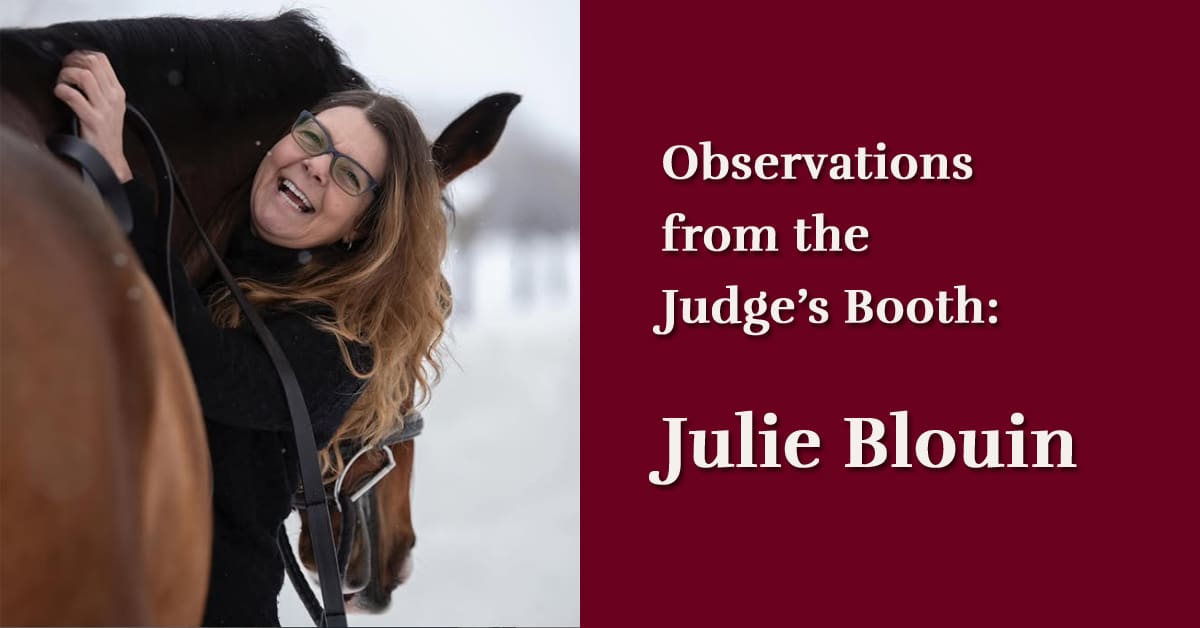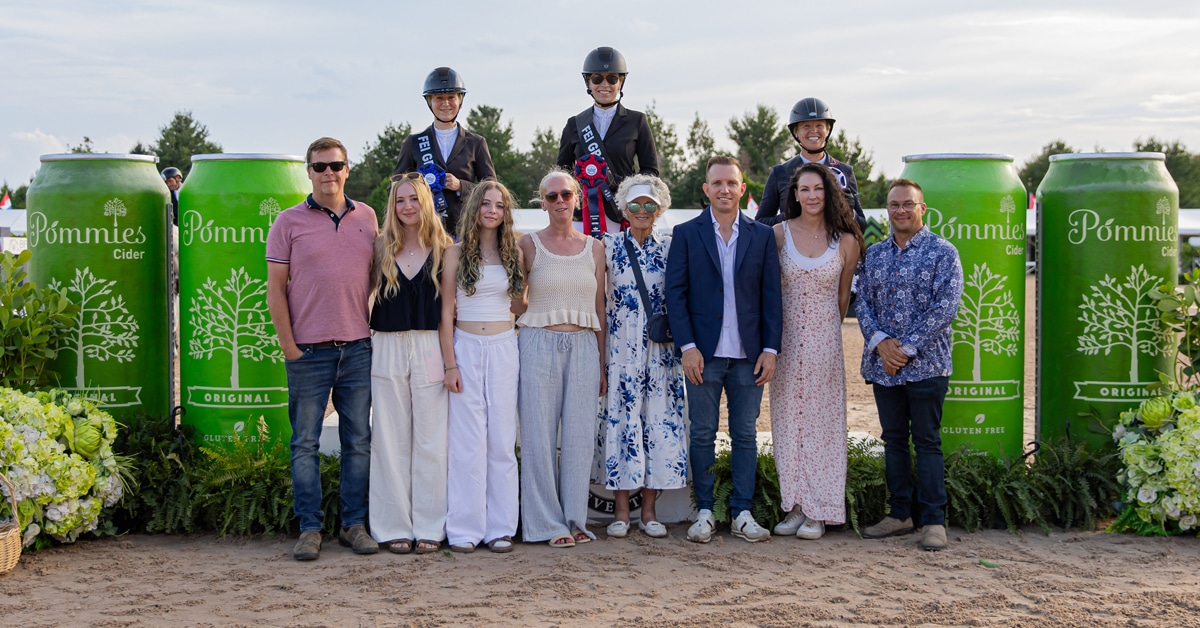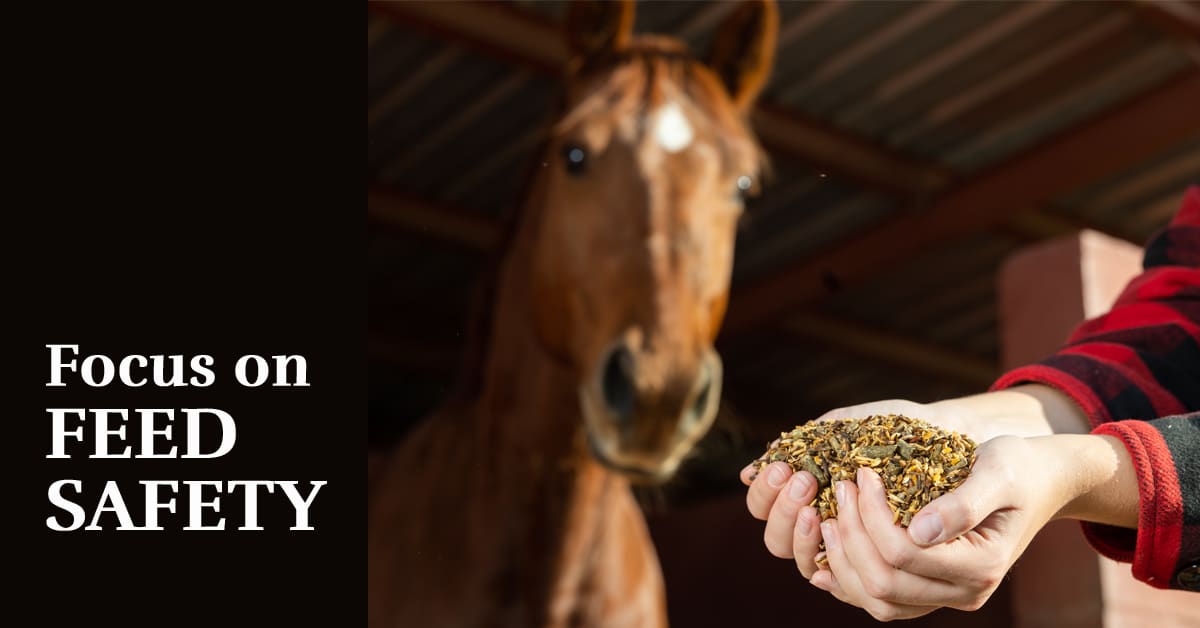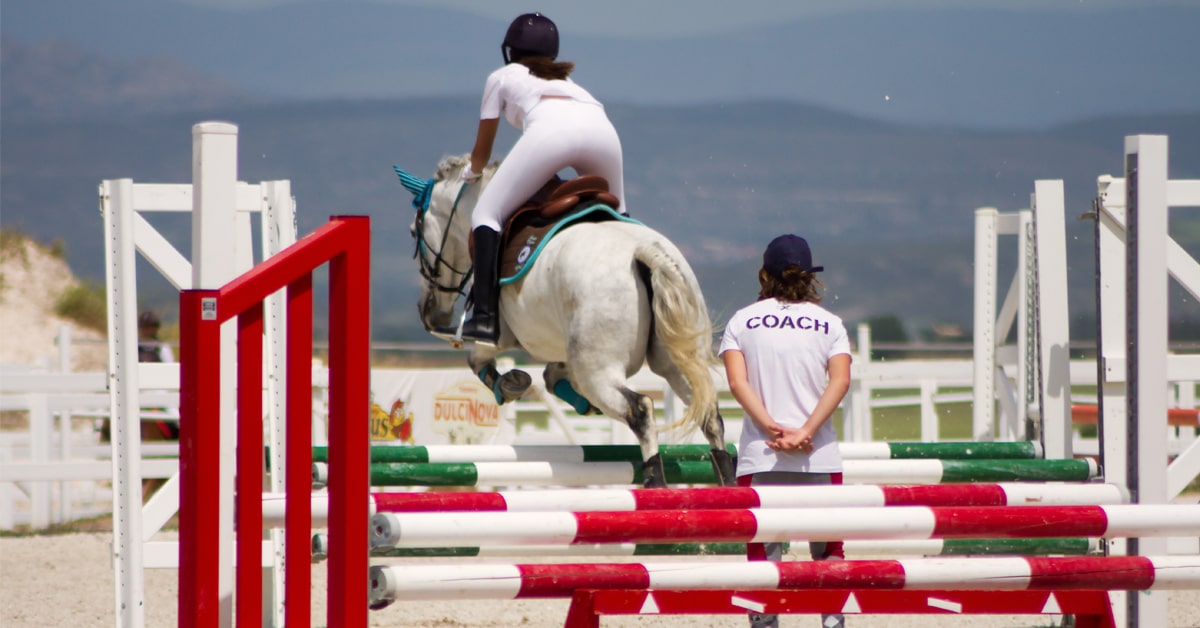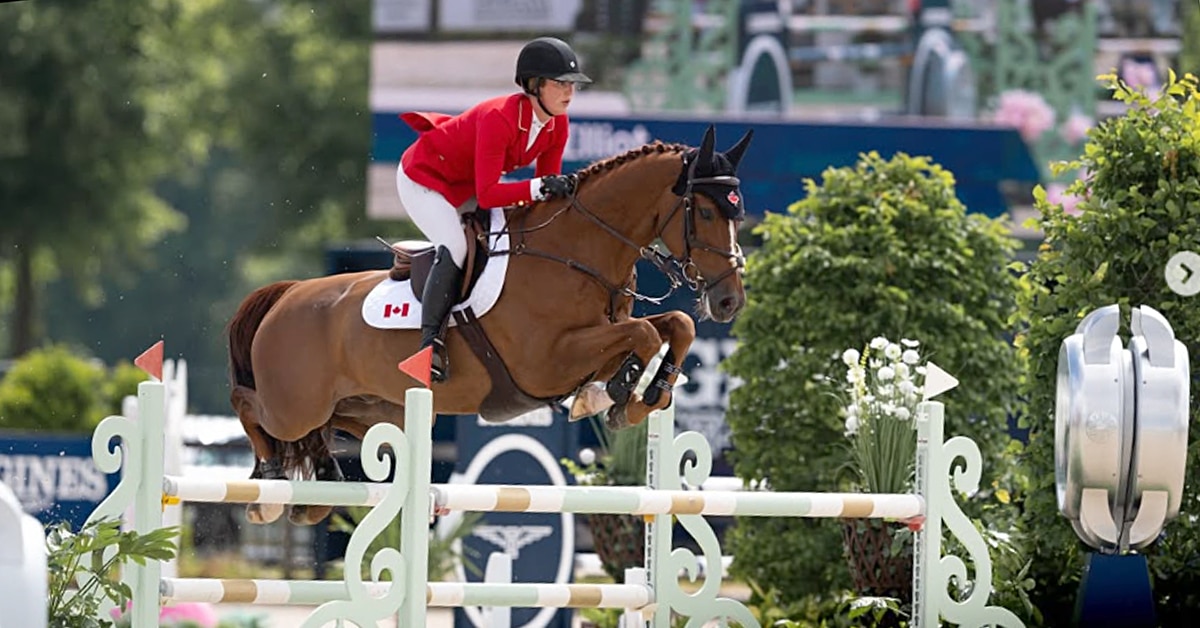In the last article we talked about our program for three-year-old horses. That included five 15- to 20-minute sessions a week that involved a varied routine of flatwork, pole work, and an introduction to jumping with a rider over small, simple obstacles. We also take our young horses off-property to school or to a show, where we hack them around to get them used to the atmosphere, but don’t compete.
At four and five, we build from that foundation. Over the winter, we’ll have started making grids a little bigger and oxers wider, and cater the exercise to the horse. If the horse needs to lengthen its stride, we’ll move the fences out a bit. For one that can’t compress, we’ll do a lot of bounces and placing poles after jumps.
Building confidence
Our biggest goal is building confidence in our horses. We don’t want them to ever say “no.” Our zero-tolerance policy applies to any age of horse; we don’t tolerate a negative response or behaviour, whether it’s on the ground or under saddle. Every minute you spend with your horse is a training session, whether you realize it or not. If you are allowing him to misbehave, you are training him to do so.
You can tell the horses that are keen and confident. A horse is brave if the first time you take it to a crossrail, it jumps without hesitation or doesn’t have an issue jumping a small flower box.
We had one horse that was terrified to even go over a pole at first, and he had to get used to jumping all the stadium jumps before we could introduce him to cross-country obstacles. Keep the fences small and easy and have a confident horse act as a lead for a young horse over obstacles they find intimidating.
It is important to be consistent with a systematic, progressive approach. Most horses are agreeable and straightforward to train, but there are always a few that are difficult and will challenge even the most experienced trainer. In those cases it’s important to step back, reassess, and if you can’t determine how to proceed, get help from someone with a lot of experience.
Make sure your horse is happy in his daily life. Some prefer lots of turnout in a group or with just one other horse. Get to know your horse so you can make the necessary changes to get the best from him.
Age-appropriate exercises
Four and five-year-olds’ bodies are still changing and you have to be prepared to give a horse time off if he needs it. If you want your horse to be a good partner, you have to listen and do an analysis if he’s not handling what’s asked of him. If he can’t balance going downhill, he might need a month or two off to grow.
With horses that are four and five, we spend a lot of time working on the quality of the canter and helping the horse to move in a rounder shape, as the canter is key for jumping. A good exercise to develop this is to canter a 20-metre circle with four poles or cavallettis, one set at each tangent on the circle. You want to maintain the same number of strides between each pole. Start with the cavellettis set at their lowest, then as the horse gets more proficient, gradually make them higher until they are full height.
We also work on lead changes. While jumping, we typically will always ask for a lead change in a corner if the horse is on the wrong lead, by half-halting with the outside rein and putting the outside leg on. If they change, great, they get a pat and we move on. If they get it wrong, quietly ask for a simple change (through the trot) so they learn that they still need to change their leads.
In the ring, we often use poles and cavelletis to ask for the change. Since we’re training event horses and they eventually need to be able to do proper dressage changes, we try not to just ‘throw’ them over – we try for a more correct, balanced change. We also train all of the horses with the idea that they may one day go advanced, so the basics need to be solid for them to eventually do the more difficult dressage movements.
Introducing outdoor questions
We introduce different questions outdoors, such as uneven ground, ditches, and banks. We have usually taken them over ditches as three-year-olds, but it’s important to do that only with horses that are brave and ready. Never try a ditch with a horse that is scared or lacking confidence.
When we canter or gallop around outside, we still want the horse in a round shape, moving off the leg and not strung out. You want him off the forehand, responding to your body aids, coming back when you ask, and rocking back on the hocks. We start our horses in a snaffle, but some horses need help balancing if they gallop around on their forehand.
Daisy, the mare in the photos accompanying this article, is being ridden in a three-ring gag. You don’t want to have to touch the reins, but want the horse responding to your body position. Sometimes it’s better to have a little more bit and use it sparingly than to be pulling constantly on a snaffle, tiring yourself and the horse. It’s like an emergency brake.
We are lucky to have a property that has both flat sections and uphill and downhill sections. Because a lot of stadium courses are on grass, we’ll work our young horses outdoors over the varied terrain. In the photos, Daisy is jumping over stadium fences that are set so that they can be jumped uphill or downhill. We have set some on bending lines to introduce her to those challenges. When introducing new jumps, it often helps to let the horse walk up to and have a look if it’s something they might be apprehensive about.
You don’t need a lot of cross-country obstacles to school at home – we have just a few, such as a ditch, bank, and corner, and we use the stadium jumps as well. In the photos, we’ve made the bank more challenging for Daisy by having her jump a brush box one stride before the drop, or she can jump up the bank to the box. The same goes with the ditch; after the horse is jumping it comfortably, you can add a pole across the ditch and additional elements to create a line. The line we’ve created in these photos includes a vertical, a skinny box, and the ditch.
By practicing these elements at a home, coupled with some off-property trips to school your young horse, you and your horse will be well prepared to start competing.
The Latest

